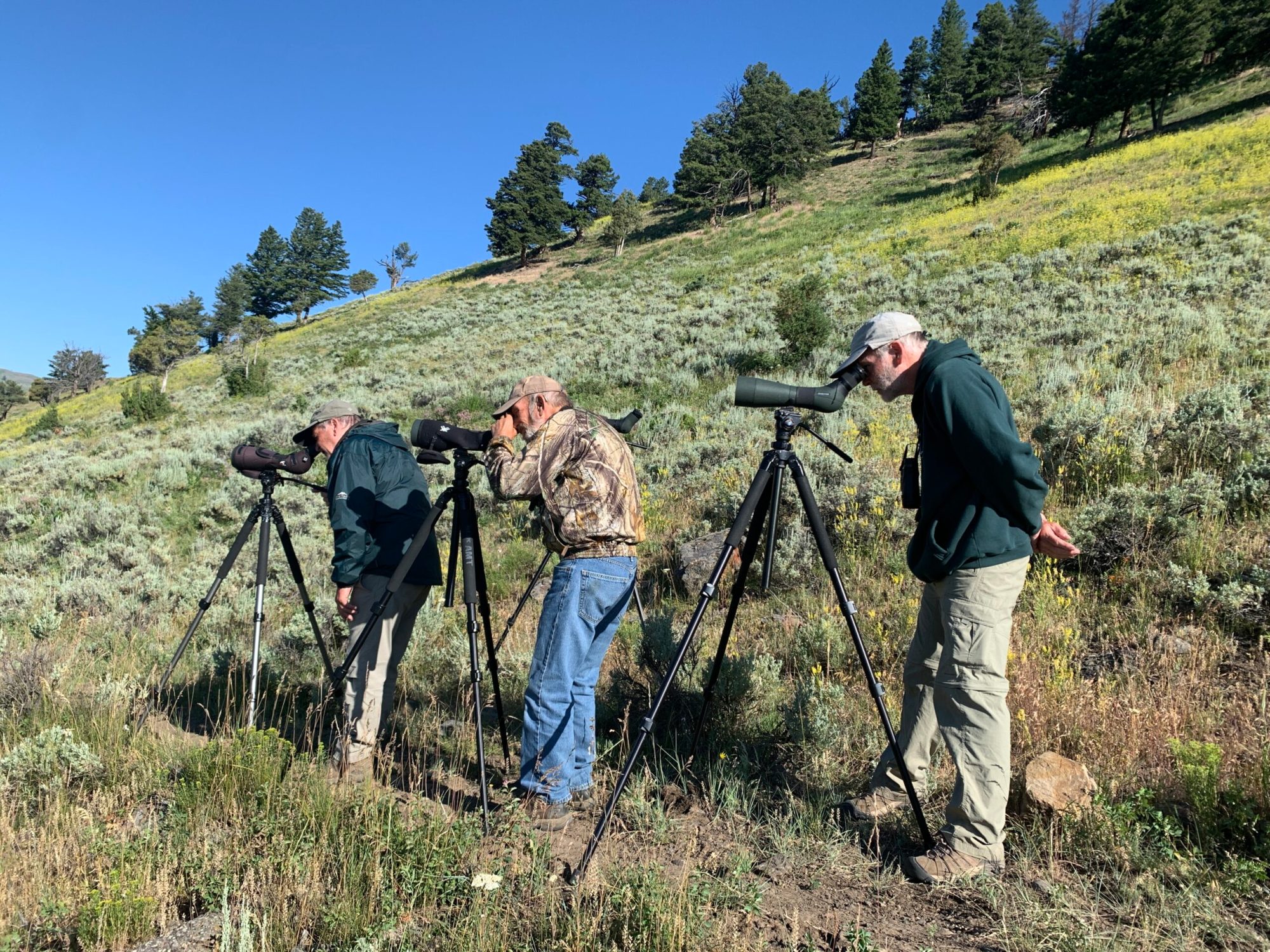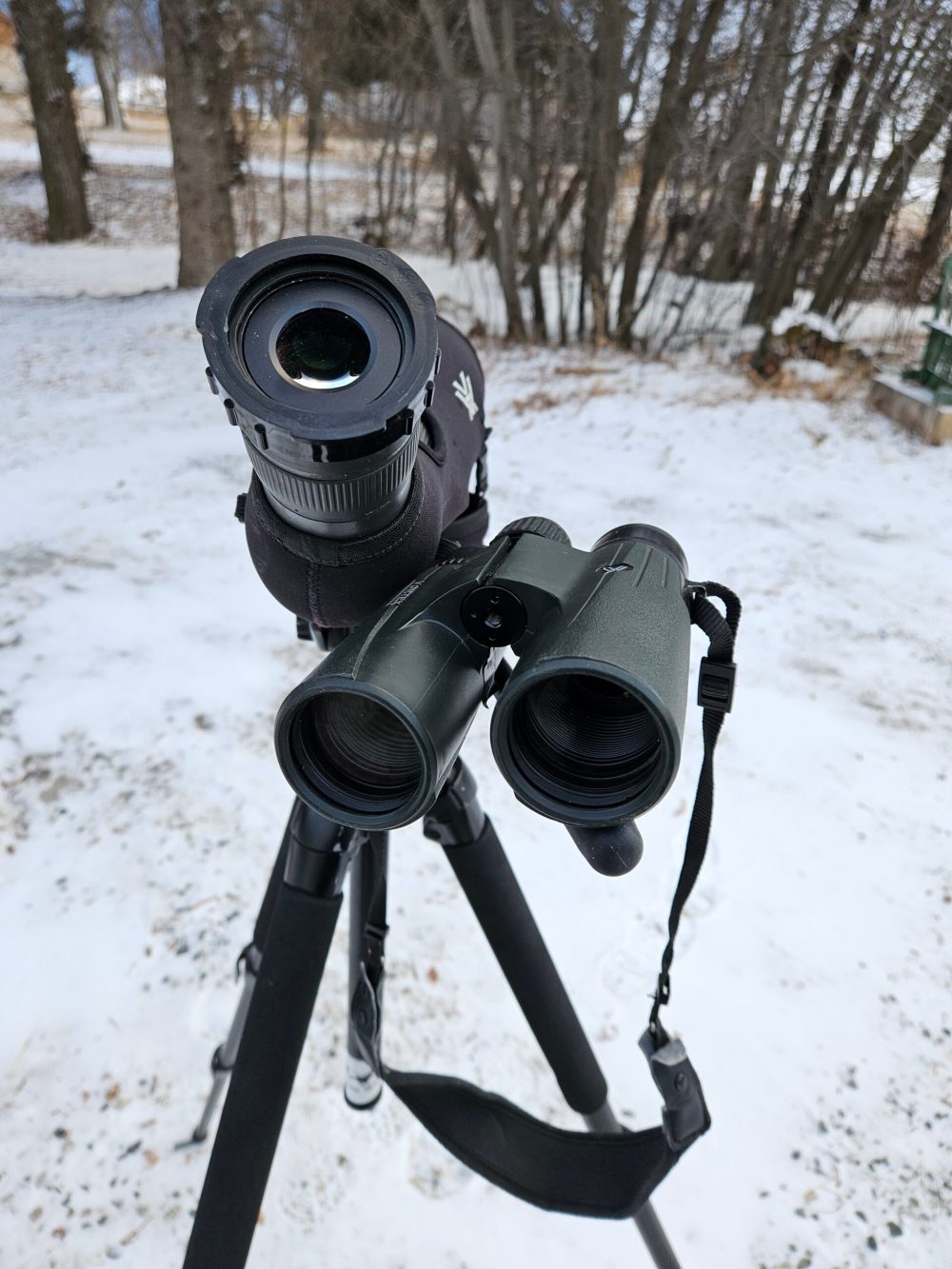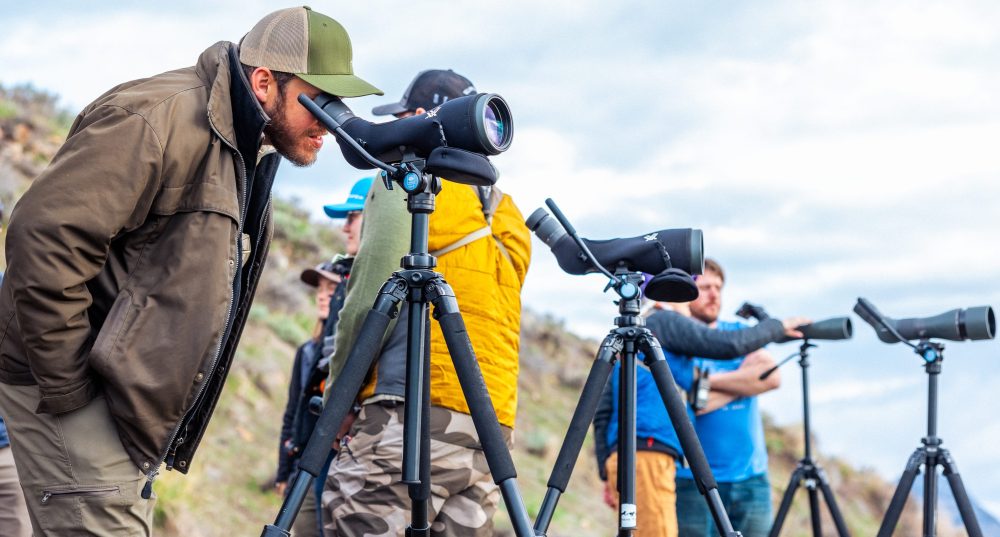The Power of Optics

I’m letting you in on the secret of viewing wildlife successfully.
Timing, patience, and optics.
These essential aspects of viewing wildlife are crucial for a successful day of spotting untamed animals in vast wilderness landscapes such as Yellowstone.
Of course, it helps to know the different habitats and “hot spots” where certain species may frequent before venturing out for a day in the field. Habitats and “hot spots” will change over time and vary depending on the season, the animal, and the time of day. That is why it is helpful to have a trained guide who knows “where to look.” Moving beyond these factors, however, when looking for and observing something in nature, it is essential to have the right equipment. Seeing the difference between what you discover with the naked eye versus the absolute detail a quality spotting scope provides always astonishes me. As naturalists, we are responsible for putting in the time and effort to ensure a successful wildlife viewing experience. We do our homework, scan specific areas with the right equipment, and guide you to the best spots.

All Yellowstone Wild guests have access to the highest-quality optics made by Swarovksi Optik & Vortex Optics outfitted with digiscope adapters for pairing smartphone camera lenses with the eyepiece of a spotting scope.

All pictures captured from a distance using spotting scopes with smartphone digscoping adapter by Ollin Company
Many people imagine a wildlife sighting in Yellowstone as a bear, wolf, or moose right next to the road, where animals can be viewed safely and ethically from a vehicle. While this is occasionally true, these up-close sightings also come with the sounds and sights of hundreds of people in a traffic jam, clustered together with smartphones in hand—most not appreciating the wild nature of the animals for what they are—taking ‘Instagram-worthy’ shareable pictures and then continuing quickly on to “the next thing.” At Yellowstone Wild, we work hard to not only maximize your chances of seeing the animal species you’re hoping for, we also promote and facilitate ethical wildlife observation. Our Code of Ethics means we leave everything as we find it: undisturbed, unmanipulated by human hands – acting only as respectful onlookers into the daily life of an animal.With the power of optics, we can witness the private familial moments of a grizzly bear several miles away, going about its daily life. Foraging, nursing, and playing near a mountaintop as we remain keen but distant observers reveling in the joy of sharing a glimpse into its daily routine as it lives it life far away from development. With the bear family never knowing we are there, we gain insights into what this animal does without the nuisance of the busy hustle and bustle of humans scurrying along the roads. One of my favorite guest quotes is, “Wow, we never would have spotted nearly half of the things you showed us without your knowledge of where to look combined with the use of your high-powered spotting scopes.” This is something that will always make me smile.
Using binoculars and spotting scopes allows us to do what guides refer to as ‘Reading the Newspaper’—taking a few moments to sit quietly, scan the landscape, observe different animals and their behaviors, and find the things that would otherwise go unnoticed with the naked eye. This technique involves patience and a keen eye, but the rewards are priceless.
Spotting scopes and binoculars are more than just tools. They are the key to a whole new world of wildlife observation. They allow us to look more closely and deeply into the natural – and wild – behaviors of animals we may never see otherwise. The power of optics enhances the overall experience—making the impossible, well, possible. With the right equipment, we can witness the most intimate moments of wildlife, even from a distance, without disturbing their natural habitat or wild behavior.
So the next time you visit Yellowstone, look high up onto that mountaintop or distant meadow and imagine that grizzly bear momma with her cubs roaming and playing behind her. They are almost certainly up there—and even if you cannot see them, know that as we live our civilian lives far below, they are comfortably enjoying their wild lives high above.
Pictures and videos courtesy of YW Naturalist Guides Emil M, Tyrene R, Aleksa B,. Additional photo(s) courtesy of Jess Nelson @ Chocolate Moose Images
Blog by YW Naturalist Erik B.

To learn more about Erik and the entire YW Naturalist Staff, head to the “About Us” page on our website


